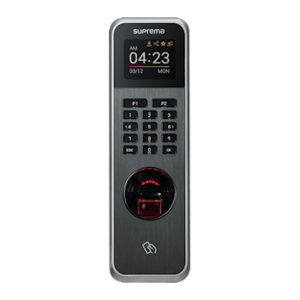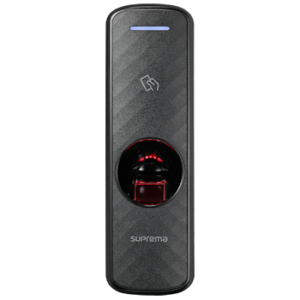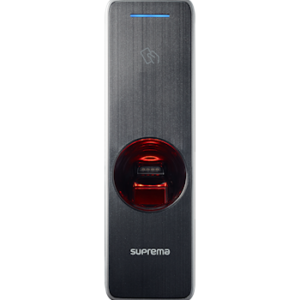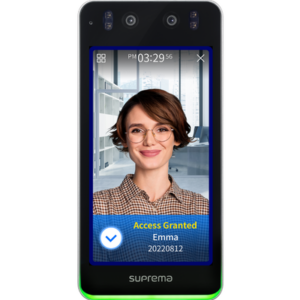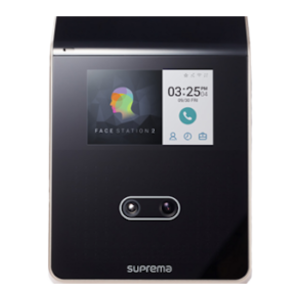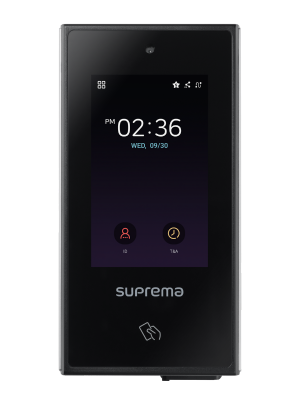Effective Security Solutions
Access Control is fast becoming an essential requirement for any business, the knowledge of the added security it provides is priceless. Not only that, it becomes a way of controlling personnel within an organisation – ensuring only the correct people go into the correct areas.
We offer tailored solutions in order to effectively meet your specific business requirements.
Powerful Solutions with Seamless Integration
Our access control solutions can help provide your business with the added security it needs to control people entering and leaving your premises and keep track of personnel whereabouts.
Flexible Biometric Access Control Solutions
Our Biometric access control terminals include a wide range of fingerprint reader and face recognition options that seamlessly integrate with your time and attendance systems for an easy solution for your access control requirements.
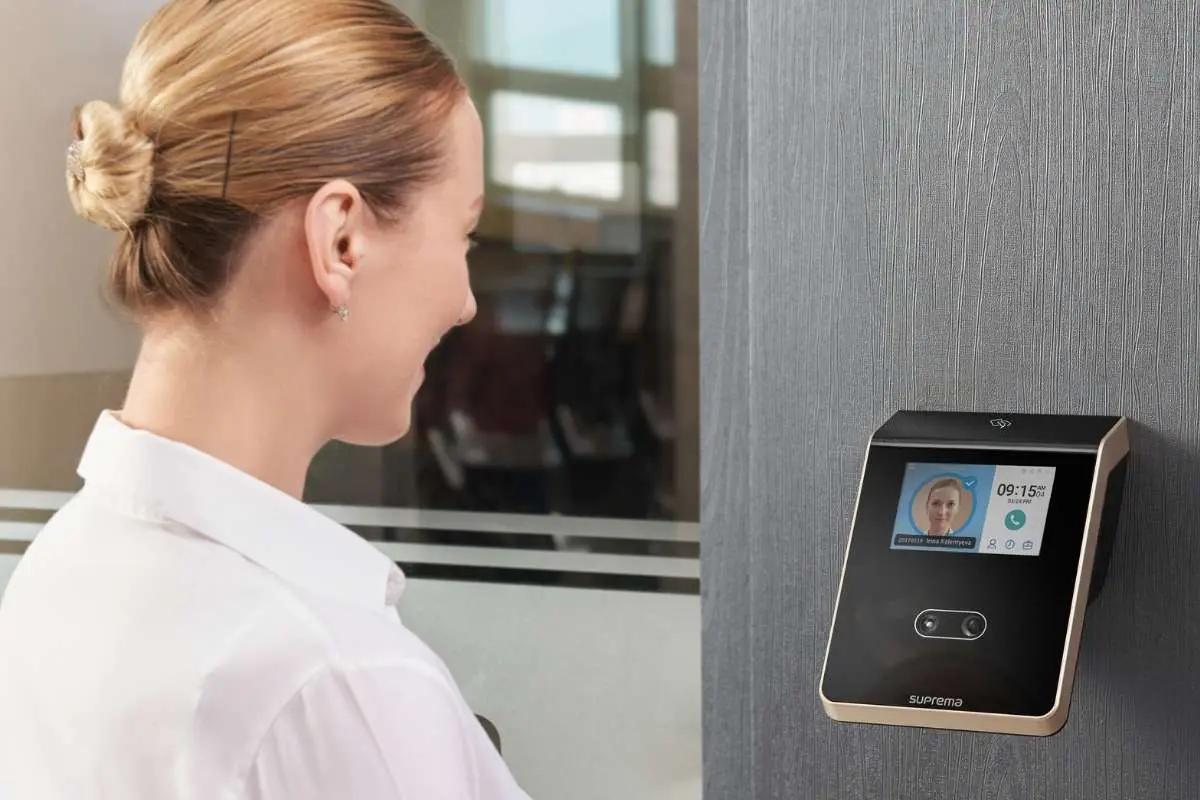
Access Control Devices
Almost all of our biometric terminals can be used for access control. Some devices are dedicated to access control such as the BioEntryW2 and BioEntryP2. When using proximity cards or fobs for access control, we use the HRX5000 or HRX Access Controller as the main control device, coupled with remote readers.
What Can We Control With An Access Control System
Doors (both internal and external), gates, turnstiles and vehicle barriers are the most common applications for access control.
Professional Installation by Our Specialists
Installing an access control solution is a skilled job and that is why we only use professional locksmiths. Our locksmiths can attend your site to perform a detailed site survey to recommend the appropriate electric locks and door furniture for your doors – each door is unique and could require a different solution depending on head height, door composition, existing locks, fire requirements etc.
We can supply and install all equipment required as part of the job including the electric locks, power supply units, press-to-exit buttons, break-glasses, key switches, intercoms as well as the actual devices that will validate access – such as card/fob readers, biometric readers and access controllers.
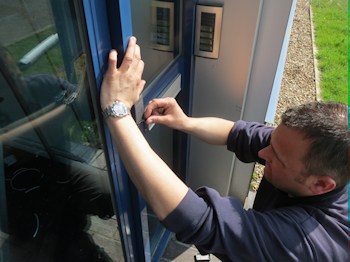
Key Benefits
Turnstile integration
Options for external installation
Fingerprint solutions
Face Recognition solutions
Proximity RFID solutions
Security features
Clear light and sound indicators
What is Access Control and Why Does Your Business Need it
The term ‘Access Control‘ refers to limiting who can access a physical location. This may be controlling door entry points, restricting access to a building or limiting access at certain times of the day. You may want to restrict employee access based on job roles or prevent contractors or visitors from entering sensitive areas of your business.
The most obvious advantage of an access control system to businesses is the increase in security they offer. However, other benefits include enhanced premises management and improved business efficiency.
What Does an Access Control System Consist Of?
Access control systems have a high degree of flexibility, allowing you to control access to anything from a single door to a whole site. Typically, an electronic terminal will control access to a given area. The terminals may be proximity-based, where a fob or access card is needed to gain entry. Other access control options include biometric terminals such as fingerprints or facial recognition.
Each terminal can be integrated with a time and attendance software solution that allows you to closely monitor all individuals’ whereabouts on your premises.
The Benefits of an Electronic Solution
No Need For Keys
Standard locks that use mechanical keys are still the most common form of access control used by businesses and remain popular due to their simplicity. However, they can cause several issues.
Lost Keys
If a member of staff loses their keys, then it presents a serious security risk. All locks will potentially need to be changed with new keys distributed to the whole team.
With electronic systems, if a fob or access card is lost or stolen, it’s simply a case of changing its access protocols so it can no longer be used to gain entry. The staff member affected can then be issued with a replacement fob/card.
No Audit Trail
Keys don’t leave you an audit trail so you have no way of knowing who has been in the building and where they might have been.
An electronic system can show you who has entered the premises, which areas of the building they have visited and the exact times the incidents took place.
Key Management
In large premises, where access to certain areas is limited to key holders, it can mean that some staff have to carry around a large bunch of keys. Remembering which keys fit which doors can be difficult, and, as we’ve mentioned above, if the keys are lost, then your business premises are very vulnerable.
A biometric access control solution means keys are not required. Instead, users simply gain access to all authorised areas using their fingerprint or a facial scan.
Increased Security and Flexible Control
A door access control system can remove a business’s reliance on standard locks and keys. They also provide higher security levels and more control over who has access to certain areas of your business premises.
Control Who Has Access
Visitors to your premises have restricted access and must be accompanied by staff members with full if they want to enter secure areas.
Restrict Access by Job Role
Set up your access control systems so only authorised personnel can enter restricted areas. For example, server room access can be limited to only members of the IT department.
Restrict Access by Time
It’s unlikely that all staff members need access to your business premises 24 hours a day, 7 days a week. Time restrictions can be set up to limit access around shift patterns for all but senior managers.
The Different Types Of Access Control
1. Discretionary Access Control (DAC)
These types of security systems are best suited for small properties with only one or two points of entry. This is because DAC offers the owner total control over who has access to the property. The potential issue is that once someone is given access, they can often grant access to others as well, potentially creating security problems.
Discretionary solutions are considered the least restrictive type of security, but it offers excellent flexibility. It’s also very easy to use and can run on standard computer systems such as Windows, which means permissions can be modified quickly.
2. Mandatory Access Control (MAC)
On the other end of the spectrum is the MAC system. This is considered the strictest system, and it’s used in high-security situations, like for government offices. Mandatory access control systems have different security levels and offer entry to premises at different points, based on permission given by the administrator or manager. Each section needs its own personal profile, so if new access needs to be given at a different level, a new profile must be created.
Take the example of a mandatory security system in use at an organisation that houses sensitive information. A general clerk would have access to pass through the front gate and into the administration office on the ground level; however, the clerk wouldn’t be able to access secure levels of the building, which an executive manager could. In turn, that manager might not have access to the next level up. In this way, the system is both restrictive and protective.
3. Role-based Action Control (RBAC)
Out of all the access control systems listed, RBAC is probably the most widely used. Access is permitted to workers based on their role within the company or organisation. For instance, a general manager will automatically have access given to those with that position in the company. This could mean all areas or just specific zones, depending on the permissions granted by whoever is in charge.
This kind of emtry system is useful for many businesses since it provides a simple user experience and is quite easy to set up. All pre-defined roles and their levels of access are specified from the outset by the administrator.
4. Rule-Based
Unlike the systems noted above, a rule based system grants permissions based on certain restrictions and commands. This could mean someone has access during different times of the day or week, or that they lose access after their account expires. This system works well for organisations that require accountability. A rule-based access control system lets you track not only if staff enter the premises, but also what areas they enter and when. You can even see the number of attempts someone has made to enter a specific area, as well as the number of times they’ve been denied access.
Rule-based access systems are also considered more flexible than other types of access control because administrators can easily modify permissions and rules as needed.
These are the four main access control systems found on business premises. The type of solution that’s best for you depends heavily on the nature of your work, the size of your business, and the type of security it requires.
Choosing a Solution That’s Right For Your Business
At Egress Systems, our team can tailor an entry system that specifically meets your individual business’s needs. Our specially trained locksmiths will then install your system, and we also offer a full support package that will quickly resolve any issues you may have.
For more details about our range of biometric access control solutions, please get in touch with our team

Flexible, Feature Rich Time & Attendance Software
Our Time and attendance software allows you to automate business processes, freeing up time which can be spent on developing other areas of your organisation. Automation also removes the possibility of human error, a potentially costly and time-consuming issue for many companies.


